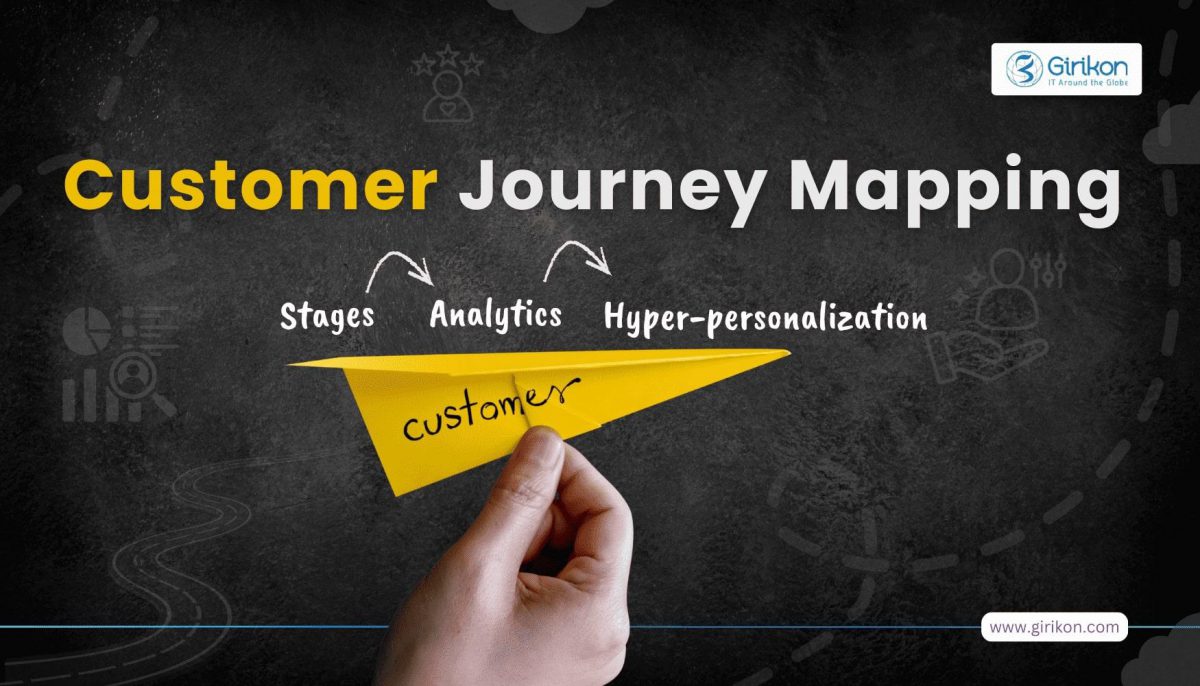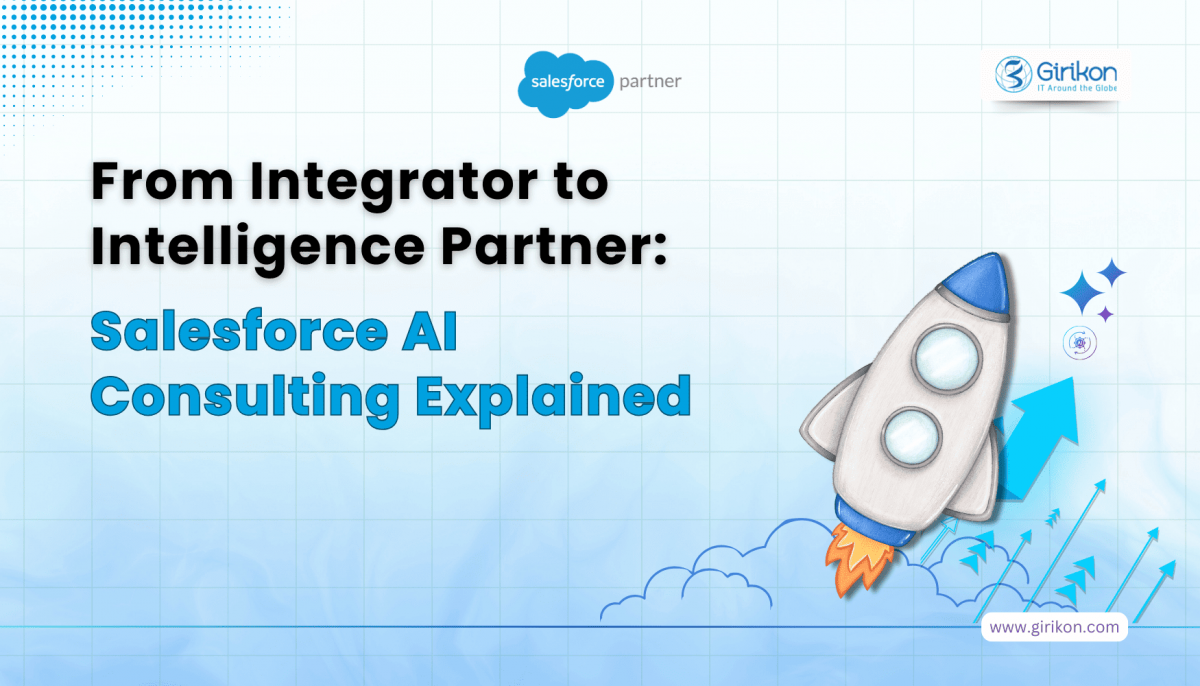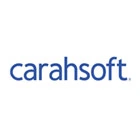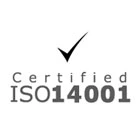It is essential to create a seamless customer experience across multiple channels and platforms to ensure customer satisfaction. This not just leads to better collaboration between different teams but also aids in business growth. All this requires having in place a robust solution, and Salesforce Customer 360 offers proper Salesforce support.
What is Salesforce Customer 360?
Salesforce customer 360 is a platform designed to help organizations better connect with their customers by promoting consistent internal operations. The platform supports internal collaboration by bringing sales, marketing, analytics, commerce, service, and IT. By leveraging this data, the platform creates unique customer IDs that can be used across all Salesforce and other applications. With this, a seamless customer experience can be created as all the teams in an organization will have access to this data.
Listed below are some reasons why Salesforce customer 360 can prove to be a game-changer for forward-looking organizations:
Personalized Customer Experience: Small businesses that manage their data on spreadsheets or sticky notes fail to deliver personalized experiences to their customers as it is difficult to understand customer contexts. Businesses should provide their customers with personalized experiences to maintain lasting customer relationships to remain competitive. Salesforce customer 360 enables teams to craft reliable data on genuine customers and their needs. This enables organizations to augment their customer service and solve customer issues.
Better Customer Experience: Figuring out genuine business customers and where they are isn’t easy. Customers, too, are apprehensive of sharing their data again and again. Salesforce customer 360 simplifies the customer satisfaction index when they connect with a business entity. Businesses leveraging such a system can benefit their entire workforce from marketing, sales, and service as they can store data that’s accessible to all. With this, customers start trusting the business and their efforts towards customer success.
Business Forecasting: Businesses can achieve sustainable growth when they meet or exceed the expectations of customers. However, this is a big challenge for small businesses. Businesses must consider leveraging Salesforce 360 to help them adapt to various apps related to sales, marketing, support, and service while fulfilling customer expectations and business growth. In fact, this platform is designed to manage a small team size of 1-20 people that can avail both sales and service functions in a single app.
Better Business Decisions: For making intelligent decisions, it’s vital to have access to well-researched facts, figures, and data points. By having a rich customer database demand forecast, sales forecast expected revenue, and customer market projection, better decision making becomes possible as, in the presence of factual data, better planning can be done. With well-articulated figures in place, both long-term decisions and planning for short-term ventures can be ensured. By having in place a robust solution like Salesforce 360, a foundation for consistent and trustworthy and business intelligence can be laid as it offers features such as Salesforce scripting, reporting, content management system, and more.
Final words:
In a nutshell, it can be inferred that the power of a robust solution like Salesforce 360 can be leveraged to improve the internal operations of a company and significantly improve customer experiences. However, investing in a powerful solution like Salesforce 360 requires time, thought, and advice from a certified and experienced Salesforce consultant.
In today’s era of cutthroat competition, conducting your business in a way that yields the desired outcome isn’t easy. This is primarily because customers have become more informed and expect personalized and timely interaction with your brand. Consequently, marketers should also be ready for change.
According to an IDC study commissioned by Salesforce, about 65% of B2B buyers engage with vendors only after they have made a purchase decision and 83% of them are willing to hear only from those that are relevant and contextual.
While marketers and sales reps make every effort to turn prospects into sales opportunities, yet they do not want to appear as spammers who would spend an entire day cold calling. Rather their goal is to build a strong relationship with them, which would help them to close sales deals quickly. However, personalizing every interaction across a long sales cycle can be daunting and thus requires having in place a well-thought-out lead nurturing strategy.
Given the fact that the average buyer’s journey is complex, and the content (problem awareness, solution consideration, and decision regarding solution purchase) that helps them to move down the sales funnel should be perfectly timed and polished, it’s practically impossible to cut it using random emails. Automating lead nurturing allows for the methodical tracing of lead engagements with appropriate content and accurate pinpointing of that lead’s stage in the sales cycle.
So, if your business is struggling to nurture leads consistently then Salesforce offers the perfect solution to manage your leads and support your sales team in multiple ways. It makes sense to get in touch with a reliable Salesforce partner if you wish to seek assistance for the automation of your lead nurturing process.
Organize Lead Information: Information gets scattered and leads might not be handled properly without a robust system in place. By installing a cloud-based CRM like Salesforce, managing lead information becomes easy. You can enter the contact details of your leads, keep a track of their calls, and emails while schedule follow-ups to fulfill business needs. You can also modify several data entry features to meet your business needs.
Access: Even if your lead information is well organized, it won’t be of much use if your team can’t access it. Since, Salesforce is a cloud-based platform, it helps your team to share, view, and update information at any point in time.
Track: While it is important to access and organize lead information, it isn’t of any use if you aren’t able to track your leads. In fact, it is crucial to have details regarding leads that are qualified and where they are positioned in the lead nurturing process for driving sales and upholding best practices. Salesforce with its features allows you to categorize lead status and convert qualified leads to contacts.
Quick Wrap-up:
It’s important to include lead nurturing within your sales and marketing strategy. However, it’s important to utilize automation resources for nurturing your leads especially if you are scaling up your business to ensure you’re connecting with your audience at every step of the buying process. To know more about the benefits of using Salesforce for nurturing your leads, it’s prudent to partner with an experienced Salesforce consultant.
According to Girikon’s Salesforce Consulting Services Team JavaScript has progressed very rapidly in recent years and is still a very powerful programming language that runs on various platforms. If you’re learning JavaScript in 2017 and you haven’t touched ES6, you’re missing out on an easier way to read and write JavaScript.
ES6 refers to version 6 of the ECMA script programming language. ECMA script is the standardized name for JavaScript and version 6 is the next version coming after version 5 which is a major enhancement of JavaScript.
Let’s start
Before ES6, the only way that we could declare a Variable in JavaScript was using the var keyword. When we declared a variable using var Keyword inside a Function. This means that the Scope of that variable would exist only within the Function in which it was declared. And it still makes sense if we declared global variable (outside of a function).
Let’s see this example:
What do you think it will print? 1 or 2?
It will print both value (1 and 2) in the function, firstly 2 and then 1. This is because function scope 2 is printed when the function is called and because of the global scope, 1 is displayed the second time.
Most of you would have get this easily and everything is great until we encounter code inside an if Statement like the example below:
The code print 2, twice because the var keyword does not support block scope. This example makes no sense to you. A block is any code within curly braces. Block scoping ensures that any variable defined within those braces don’t become global instead they have local scope this type of control prevent you from unexpected behaviour in your code.
“Let” Is the new Var
The lack of block scoping has caused many headaches for JavaScript developers especially during variable declaration in for loops. So, for this ES6 introduced Let Keyword any Variable assigned with let always have block scope and cannot be hoisted. If we will use let keyword instead of var then it will be less error prone and avoid all the confusing bugs.
Const
ES6 also introduced another keyword const this can be useful when you need to declare a variable that cannot be redeclared. Const keyword are also blocked scope and cannot be hoisted. However, there are couple of things to be aware of when using the const keyword since const value cannot be reassigned, they must be initialized at the time they are declared.
Just don’t forget that constants are immutable so when dealing with objects or arrays, only the object itself cannot be reassigned. Property within that object or array can be changed example:
We can execute the following code and the name property will be reassigned without throwing an error.
Why type the same thing twice?
Developers are always trying to get data in and out of arrays or objects so for this they use code where the property of an object are initialized using variables like:
In ES6 you no longer must repeat yourself if the variables and object property names are the same. This code accomplishes the same thing:
All we did here was remove the repeating variable name and colon (:). This is very useful when we have objects containing many fields.
ES6 also provide a simpler way of getting out of array or objects. This helps reduce repetitive lines of code example:
You can now access the data through the variable names. So here the number 1 would be Printed to the console. But instead of this you can use another shortened method known as array DE structuring.
The bracket on the left side of the assignment are part of the new DE structuring syntax. So, this is something like four variables named one, two, three, and four and assign the first value in the numbers array to variable one, the second value to variable two, and so on. Shorter, sweeter, great.
We think that once you start working with ES6, you will come to love them as much as we do.
About Girikon
Girikon are IT Development and Salesforce Consulting Company. An excellent choice to be an organisation’s Salesforce Development Partner.
As a Software Development Company, we will take the time to meet your requirements. We have a variety of
A popular term that we constantly hear today in the tech marker is Cloud Computing. Salesforce is one of the technologies that is dominating among all the the cloud computing solutions.
In this blog, I ( A Salesforce Consultant) will give a brief introduction of Salesforce and will answer few questions: Why Salesforce? What is Salesforce? What are the services offered by the Salesforce?
Why Salesforce?
1.People who are using Salesforce say it’s unique for three major reasons:
• Fast: If we talk about the legacy CRM system, it takes year to deploy. But Salesforce provides you a fastest path from Idea to App. You need not to think about the infrastructure but building your app.
• Easy: In easy to use category Salesforce is the Boss. You need to spend more time on developing rather than figuring it out.
• Effective: The ability of customizing Salesforce to meet your business needs, consumers find it very effective.
2. Salesforce is handy, it is there on cloud, a device and internet connection and your team is good to go.
3. As compared to other CRM’s, Salesforce is easy to integrate. You can integrate Salesforce to your Outlook as well as your accounting software.
4. Salesforce is highly scalable to your growth.
5. Salesforce is for all, even the startups and small businesses can use Salesforce.
Salesforce is affordable considering its vast variety of services.
What is Salesforce?
I hope I have answered the above question well, why should we use Salesforce. Now it’s the time to discuss what is Salesforce?
Salesforce.com is a company and Salesforce is a technology. Salesforce.com started as SAAS (Software as a Service) CRM Company. Along with various software solutions, now Salesforce.com provide a platform named Force.com for the developers for building and distributing custom software (PAAS).
Salesforce is the technology which works on Multitenant Architecture, that describes multiple users can share the common access to the software instance. On Salesforce platform, software and infrastructure upgrade happen automatically. So your organization need not to worry about managing technology, rather focus on innovation.
What are the Services offered by the Salesforce?
The importance of Salesforce in Cloud Computing market cannot be understood completely, without knowing about the wide variety of products and services that Salesforce offer. Below are the cloud services that are offered by Salesforce:
• Salesforce Sales Cloud
• Salesforce Service Cloud
• Salesforce Community Cloud
• Salesforce Marketing Cloud
• Salesforce Commerce Cloud
• Salesforce Analytics Cloud
• Salesforce App Cloud
• Salesforce IOT Cloud
I tried to touch the basic technical aspects of Salesforce in this article. We as an organization and Salesforce implementation partner provide Salesforce development services in all the major areas.
The success of any software implementation depends on the user adoption rate. In any organization, a new system is implemented for the betterment of its employees as the new system eliminate some or all redundant process, manual efforts.
Well, it is not necessary that the newly implemented system does the above-mentioned work. In short, it helps in boosting the employees’ efficiency.
The same goes for Salesforce Implementation . If your employees’ are not used to Salesforce environment, then it will be quite difficult for the users to adopt the system and work on it on the daily basis.
“There are innumerable reasons determining why users are not adopting a new system. In the below segment we will be discussing those factors and solution for solving them and getting more and more users onboard.
Training Sessions for the End Users:
It is important to provide full-fledged training, especially to the immediate end users before switching to a new Salesforce solution. Video, tutorial, live demo, webinars on UAT Mode proves to be quite beneficial and helps a lot in adapting.
One can also provide customized training for different users depending on their permission, groups. When the employees attend the training, they share their doubts, feedback about the solution which in turn helps in making the solution even better for the employees.
Prepare the End-users:
It is important to keep your users notified that a new system will be introduced to them for their daily work. You can do this 1 month or 15 days prior to the implementation depending upon the system.
You can start with pamphlets, newsletters, etc., and as the implementation day approaches you can organize one to one training so that user adoption is smooth and the user will also not find that hard to settle with the new system.
User Manual for the users:
It is a good practice to provide User Documentation of newly developed system so that the end users can refer that document whenever they get stuck. User manual with system images gives more clarity and helps the end users to find the solution easily.
Realize your users the need of new system:
It is vital to explain the need for introducing a new Salesforce solution to the end users and what benefit can one achieve from the new solution so that the adoption is less complex.
Implement the new system in sync with the existing business flow so that the users can understand it and find it not hard to adapt it.
Provide support to the end users after implementation:
After the implementation, provide hands-on training to the users and resolve all the queries asked by the users. Sometime, a user may get confused by seeing new user interface may end up asking minor questions. All you have to do is be patient and answer all the questions asked and show them how to achieve it.
That’s all for this article, in case you need a Salesforce Consultant , Salesforce Implementation Partner or Salesforce Development Services then please feel free to reach out to us at sales@girikon.com
Girikon is a one-stop destination for Salesforce Development related work having its offices in USA, Australia and India
Who is a Salesforce Consultant?
A Salesforce Consultant is a knowledgeable, experienced person who helps in utilizing your CRM qualities to the fullest which will benefit your business.
Finding a suitable Salesforce Consultant who can be fit for your business is never an easy task. You need to have confidence in their Salesforce experience, knowledge, problem-solving abilities.
Automation has now become an indispensable part of every software and service, Salesforce Marketing Cloud is a packet of digital marketing automation and analytics. It’s good to see website analytics and email data that run together seamlessly and where we require it. More profits have come out with the partnership between Google Analytics 360 and Salesforce. It allows trailing campaign data and website performance metrics from Google Analytics and makes it available within Salesforce Marketing Cloud.
With this integration, transactions that occur outside of email, or landing page templates generated by the tool are traced. Google Analytics serves as a data hub covering the success of different campaigns from different tools, marketers can get a more comprehensive picture of their email journey and mobile marketing efforts and how they affect website behaviour and conversions.
Integration has allowed a new set of metrics accessible in the Marketing Cloud interface:
Site Usage
Sessions
Bounce Rate
Goals
Goal Completions
Goal Value
Goal Conversion Rate
Abandonment Rate
E-commerce
Ecommerce Conversion Rate
Revenue
Transactions
Average Order Value
Till now, there was no way to view Google Analytics data along with email metrics. The most simple solution to this problem has always been to use constant campaign tracking parameters, export data from diverse systems, and mix them together in a third reporting suite. Now the process has become simple which means marketers have perspicacity at an arm’s length. It tracks traffic on the website, check clicks to the website and determine the source of traffic on the site. Google Analytics 360 provides easy reporting. The integration uses campaign tracking parameters from emails to correlate website visits with a Marketing Cloud campaign.
When you connect this data with the offline exchange and qualified lead data from Salesforce Sales Cloud, we are proposing the free-flowing marketing data paradise we’ve all fantasised of.
With this increased feature, we as a Salesforce Consulting Partner are delighted as we can provide our customers with satisfying solutions.

 +1-480-241-8198
+1-480-241-8198 +44-7428758945
+44-7428758945 +61-1300-332-888
+61-1300-332-888 +91 9811400594
+91 9811400594


















